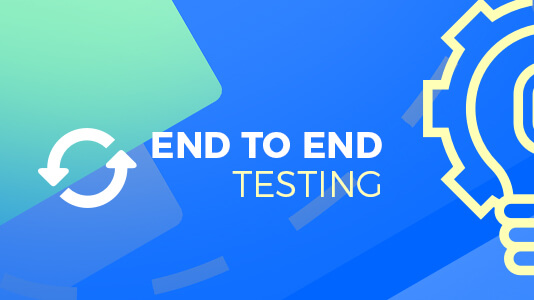Software testing suites and end-to-end testing are critical in software building. These tests make sure that your software runs smoothly by finding problems ahead of time. To do this, testing tools mimic the way a potential user will use the software.
And Python is a fantastic programming language to build such testing tools. Python is one of the most popular programming languages out there, and for a good reason.
Python, an open-source language released in 1991, is both a simple and powerful language. Its simplicity makes it easy to learn and read, something that’s helpful for beginners. But just because it values simplicity and readability doesn’t mean it can’t scale.
As an object-oriented programming language, Python is also robust, and you’ll find it exceptional for building an E2E software testing tool.
What Is E2E Testing?

Even though end-to-end testing can get complex, in concept, it is straightforward. In simple terms, it is a type of software that tests other software. E2E testing runs through a program (from the beginning to the end) to ensure that the code is running properly.
In software development, end-to-end testing is a crucial step. Without it, you cannot be sure that the software will work under real-life circumstances. This is especially true as software becomes more and more complex.
Modern software is elaborate and has layers and layers of components. Networks, user interfaces, third-party integrations, and other subsystems have to work in harmony. Any one of these blocks can fail, resulting in an unstable program.
But even if specific blocks of code work in isolation, there is no guarantee that the entire application will work. Because with complexity comes unexpected bugs. So E2E testing explores the entire program as a whole, from start to finish, to find bugs ahead of release.
Automated Testing
This testing can be run both manually and automatically. If manual, someone simply uses the program and finds problems along the way. But this is a time-consuming and laborious process.
Automatic testing, however, is significantly more efficient. While expensive and challenging for a smaller company to implement, it is a critical step for large software companies. Automated testing repeats predefined actions over and over to ensure that the software’s components—the network, the server, the hardware, the UI, etc.—are all compatible.
And as software is updated, so too must the E2E testing tools working alongside it. Even though it is time-consuming, keeping your E2E testing up to date means that it won’t miss bugs.
What is Python?
Many programming languages, such as C++, are not all that approachable. The syntax and structure are specific and complex, making it strenuous to learn. But Python is a minimalist programming language, and it’s fantastic for beginners.
Python is a backend programming language that is simple and approachable—the syntax is similar to English. It is also a high-level language, which means that you don’t have to worry about low-level details such as memory management.
And despite Python’s straightforward and readable code, it is also powerful and scalable. Python is particularly exceptional with automated tasks, a feature you want in software testing.
Dutch programmer Guido van Rossum began working on Python in the late 1980s and released it in 1991. Since the original release, it has undergone many updates and acquired lots of new features. But it has held onto its core approach of simplicity and approachability.
One of the core philosophies of Python is that it should be easy and fun to use. In fact, the name Python is said to be a reference to the British comedy Monty Python.
Why Use Python?
Despite its simplicity, clarity, and ease of use, Python is also powerful. The language is optimized for object-oriented programming, but it is also functional. This means that a programmer can decide whether functions or classes will work better.
And Python also has a deep library of packages for testing. These are pre-made and customizable automation scripts that make it pain-free to build your software testing tool.
If you are a beginner, you can also count on a large and welcoming community worldwide. Aside from the well-maintained and friendly community, Python tutorials are widely accessible across the internet. The variety of these tutorials is endless; everything from writing your own Monte Carlo simulation to building web extraction tools in Python.
Why Testing Tools Fail
Even though E2E testing is supposed to catch bugs, a test suite in software testing is clunky and can too easily fail. When the testing software doesn’t evolve with the application, it will miss more and more bugs.
This is because as an application is updated, users will take different pathways through it. And when the testing suite doesn’t account for this, bugs will slip through.
Building an E2E Software Testing Tool
Python is great because you can build a simple testing tool with just a few steps. And with Python, a straightforward tool can always evolve with you. More complexity can be added on top of the simple foundation.
One way of testing an application is to do it manually, but if you’re building a tool, then you want to automate the testing process. In Python, automation modules can be called that allow for exploratory testing.
And Python uses duck typing, which means you don’t have to worry about the class of an object before using it. This is especially useful for automation, where you don’t have to be fussy about classes/types.
Integration and Unit Testing
An integration test takes a particular input and makes sure the output is correct. It is a pathway through the program that involves multiple components that all have to work properly.
The problem with integration testing is that if you get a test.fail situation, it is hard to pin down the issue. Depending on how many parts there are to your program—classes, functions, and modules—any one of them could be the problem.
Integration testing is efficient, but diagnosing failures can be a headache.
Unit testing, on the other hand, zooms in on a specific component. It takes more time, but when there is a bug, it is obvious which component has failed.
Conclusion
If you want your application to run smoothly, end-to-end testing tools are critical. And Python is simple and easy to learn.
And with its rich library of automation scripts, Python is a great choice for building your software testing tool.
Author Bio:

Erik is the MIT-educated COO and Co-Founder of ProdPerfect. He loves unleashing the potential of the great folks in the world and loves helping make decisions with facts. A couple years ago he co-founded ProdPerfect, where he helps his team grow personally and improve their ability to help people solve QA problems. He also helps customers use actual live data–instead of educated guesses–when deciding what tests to write and maintain. In his spare time he podcasts and writes books about making fact-based decisions in business and politics.
The post Building an E2E Software Testing Tool in Python appeared first on The Crazy Programmer.
from The Crazy Programmer https://ift.tt/3h48jZa
Post a Comment